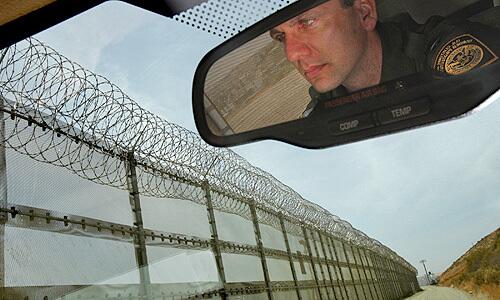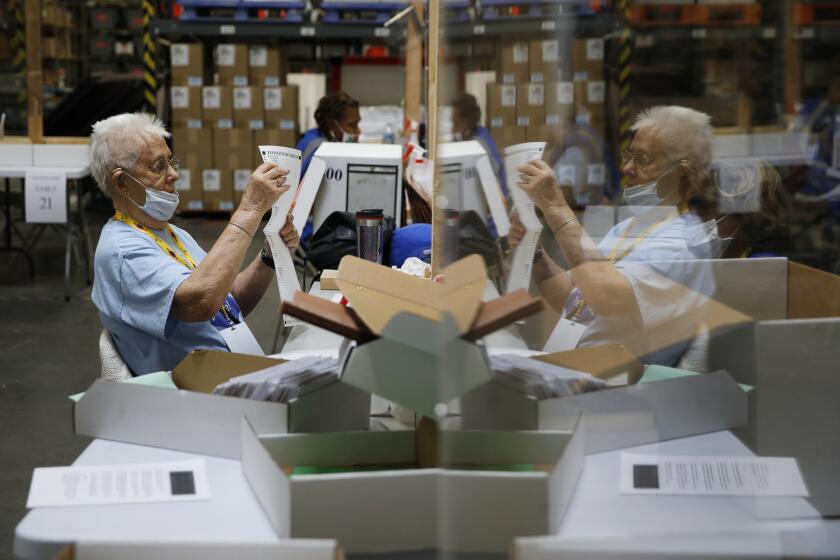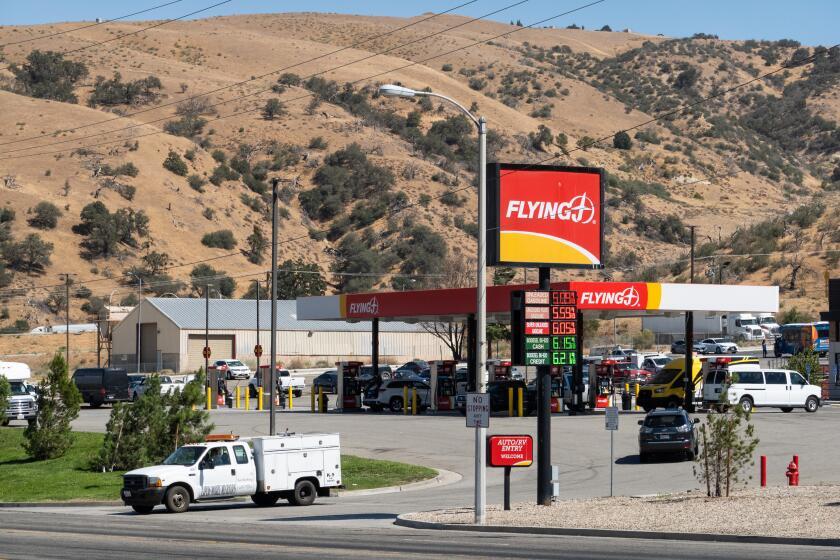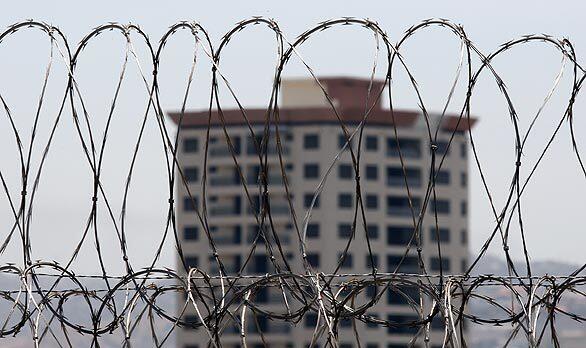
A Tijuana residential high-rise is seen through razor wire coiled atop the border fence. U.S. authorities hope the sharp 3-inch-long double-sided barbs will deter illegal immigration near the Colonia Libertad neighborhood, which has long been favored by Mexican drug and immigrant smugglers. (Don Bartletti / Los Angeles Times)
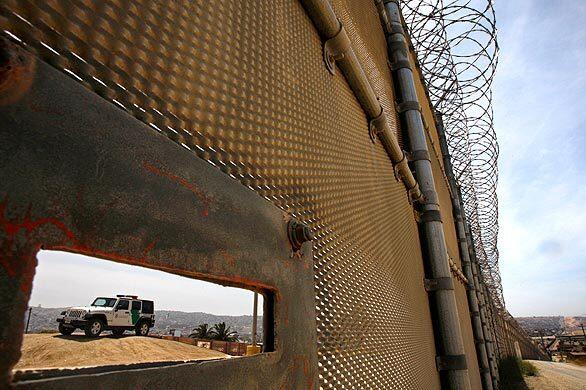
A U.S. Border Patrol vehicle sits in “no man’s land,” the 50-yard gap between the primary and secondary border fences near San Ysidro. The region is already the most heavily fortified stretch along the Southwest border, with stadium lighting and camera towers in addition to the dual walls. About a mile of concertina wire has been installed so far along the 15-foot-high secondary fence, and four more miles of wire are expected to be up by this summer. (Don Bartletti / Los Angeles Times)
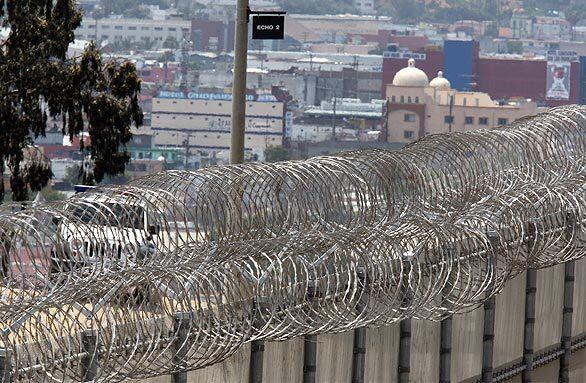
Immigrant rights advocates call the razor wire an inappropriate, militarized attempt at addressing illegal immigration, and say it “shows a total disregard for human life.” But in the five months since the wire went up, assaults and illegal entries have each dropped 50 percent from the same period last year. (Don Bartletti / Los Angeles Times)
